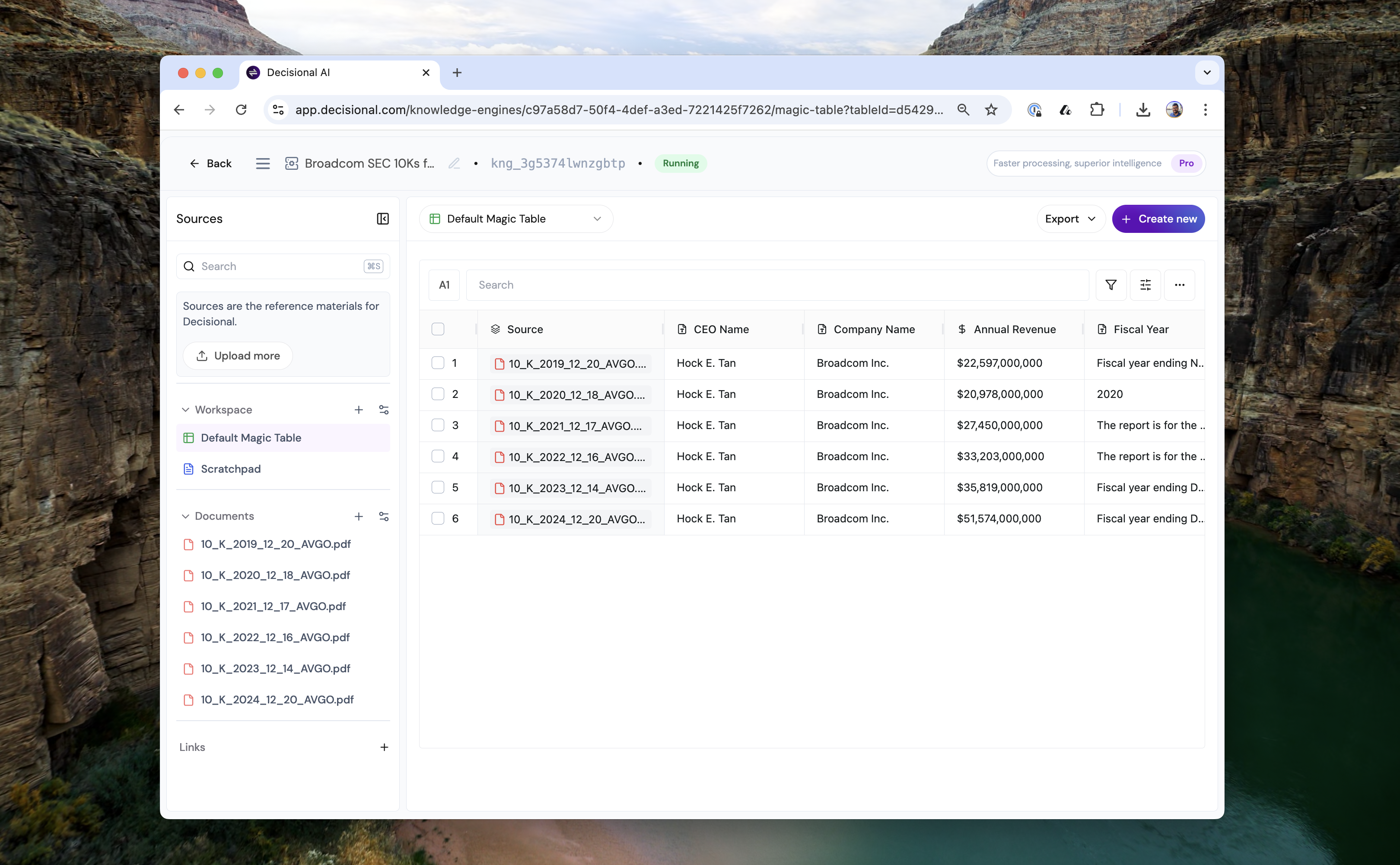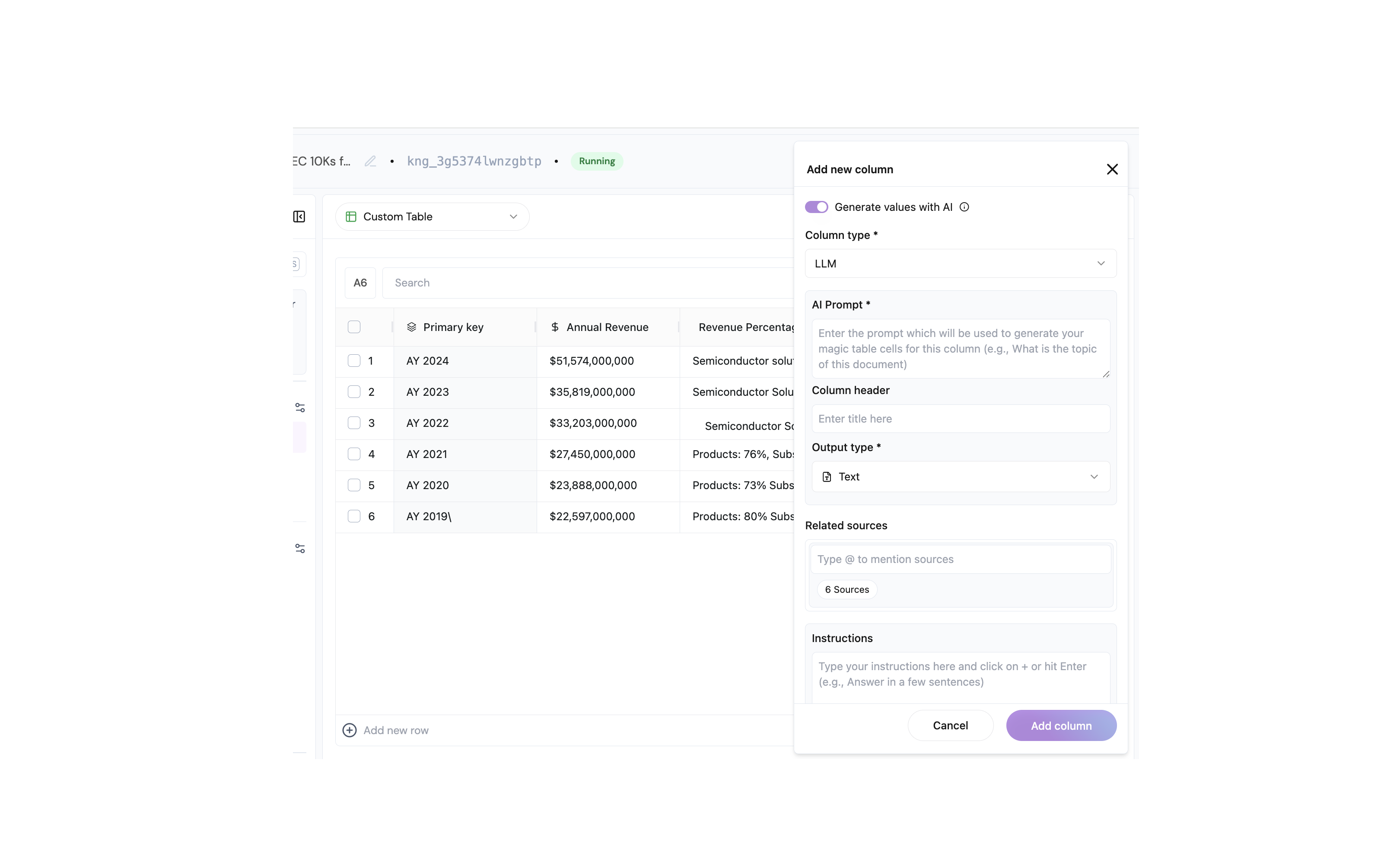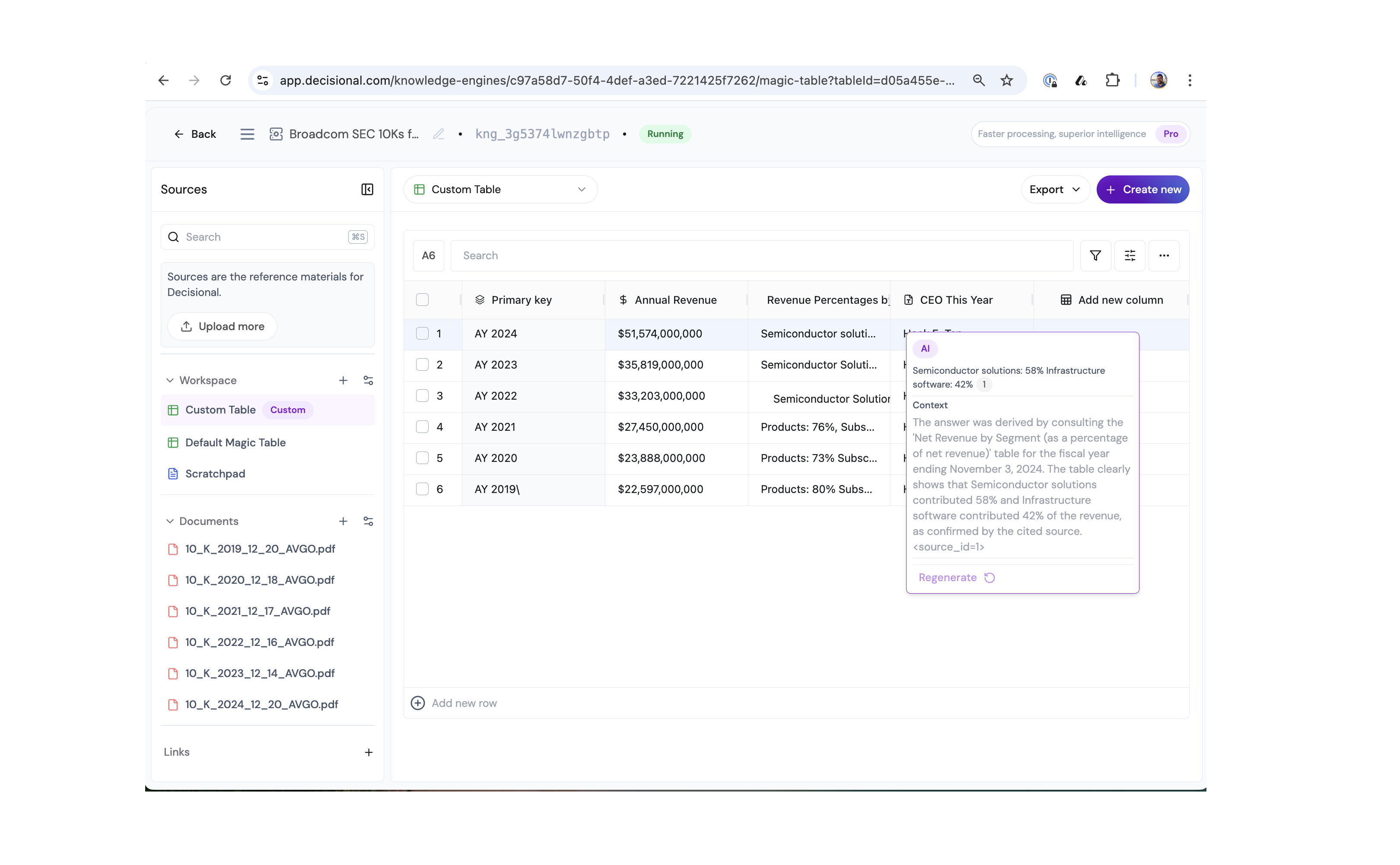knowledge_engines. You can use Magic Tables to generate any kind of table from the underlying sources in the knowledge_engine.
Every cell in the Magic Table has its own AI Agent that is used to read sources and generate cell values in a specific format defined.
Types of Magic Tables
There are two kinds of Magic Tables depending on what the primary column / key in the table is. For a default table the primary key / column is a source. For a custom table the primary key / column is any value that you provide it.The primary column / key is the first column in the table from the left. It is a column of special importance since it, along with the column headers allow define the table structure
Default Magic Table
In the default magic table the primary column / key is composed of the sources added to theknowledge_engine

Custom Magic Table
In a custom magic table, the primary column / key is a text value that is added by clicking on the + add row button on the bottom of the table. In order to add a row click on the Add new row and hit enter after typing it out.Add new column button found on the top right of the table. Clicking on this opens up a form where you can modify the configurations of the column.

Column types
You can choose from optionsLLM or Metadata that allow you to specify what kind of column type you want to generate.
AI Prompt
An AI prompt is the specific instruction you provide to guide the AI agents responsible for generating content in each cell of your Magic Table. Think of it as the question or directive that tells the AI exactly what information to extract or analyze from your knowledge sources.An effective AI prompt should be:
- Clear and specific: “What was the annual revenue for this company in fiscal year 2023?” is better than “Tell me about money.”
- Contextual: The prompt should acknowledge that the AI needs to find information related to the primary key.
- Format-aware: Consider the output type you’ve selected (text, currency, percentage, etc.) when writing your prompt.
Output types
When creating a new column you can choose from a list of column types. This allows you to control the format in which AI is outputting values. For eg.Text is a general purpose output type where you will get the output in a text format. Currency will output values in a particular currency.
Text
Text
A general-purpose field that accepts any alphanumeric characters, spaces, and special symbols. Ideal for names, descriptions, and other textual information.
Verbatim
Verbatim
A field that preserves exact formatting, spacing, and special characters as entered. Perfect for quotes or when searching for exact text in the underlying sources.
ID
ID
A unique identifier field that only accepts letters and numbers without spaces. Commonly used for reference codes, product IDs, or database keys.
Number
Number
A field that accepts only numerical values (integers or decimals). Suitable for quantities, measurements, and mathematical calculations.
Percentage
Percentage
A numerical field that represents a proportion out of 100. Displayed with a % symbol and often used for rates, discounts, or statistical values.
Currency
Currency
A numerical field formatted to display monetary values with appropriate decimals. Automatically applies your system’s default currency symbol.
Currency Symbol
Currency Symbol
A specialized currency field that allows selection of different currency symbols (€, $, £, ¥, etc.) alongside the numerical value.
Date
Date
A field that captures calendar dates in a standardized format.
Single Select
Single Select
A field that allows the AI to choose exactly one option from a predefined list of values. Similar to radio buttons or dropdown menus.
Multi Select
Multi Select
A field that allows the AI to choose multiple options from a predefined list of values. Similar to checkboxes or multi-select dropdowns.
URL
URL
A field designed specifically for web addresses. Includes validation to ensure proper URL format and may render as clickable links.
Cell states
Once you add a column to a magic table, you will start to see values being generated. Initially, each cell is in thequeued state and then progresses into the generating state followed by the terminal state of failed, not found or alternatively, the cell value is loaded into the cell. Here is a bried description on what each of these states mean:
queuedmeans that the AI Agent is yet to pick this up for processinggeneratingmeans that an AI Agent has begun to process the cell valuefailedmeans that an error was encountered and the Agent was unable to generate the answernot foundindicates that the AI Agent completed its task but was unable to find a relevant answer and decided to flag that the value was not found.
Cell Values
Once the AI Agent has generated an answer, the value will be visible on hovering over the cell with your mouse. There are multiple sections that can be found within the cell value hover.Cell Value- this is visible at the topContext- this is a trace that captures the reasoning or thinking behind how the cell value was generated

